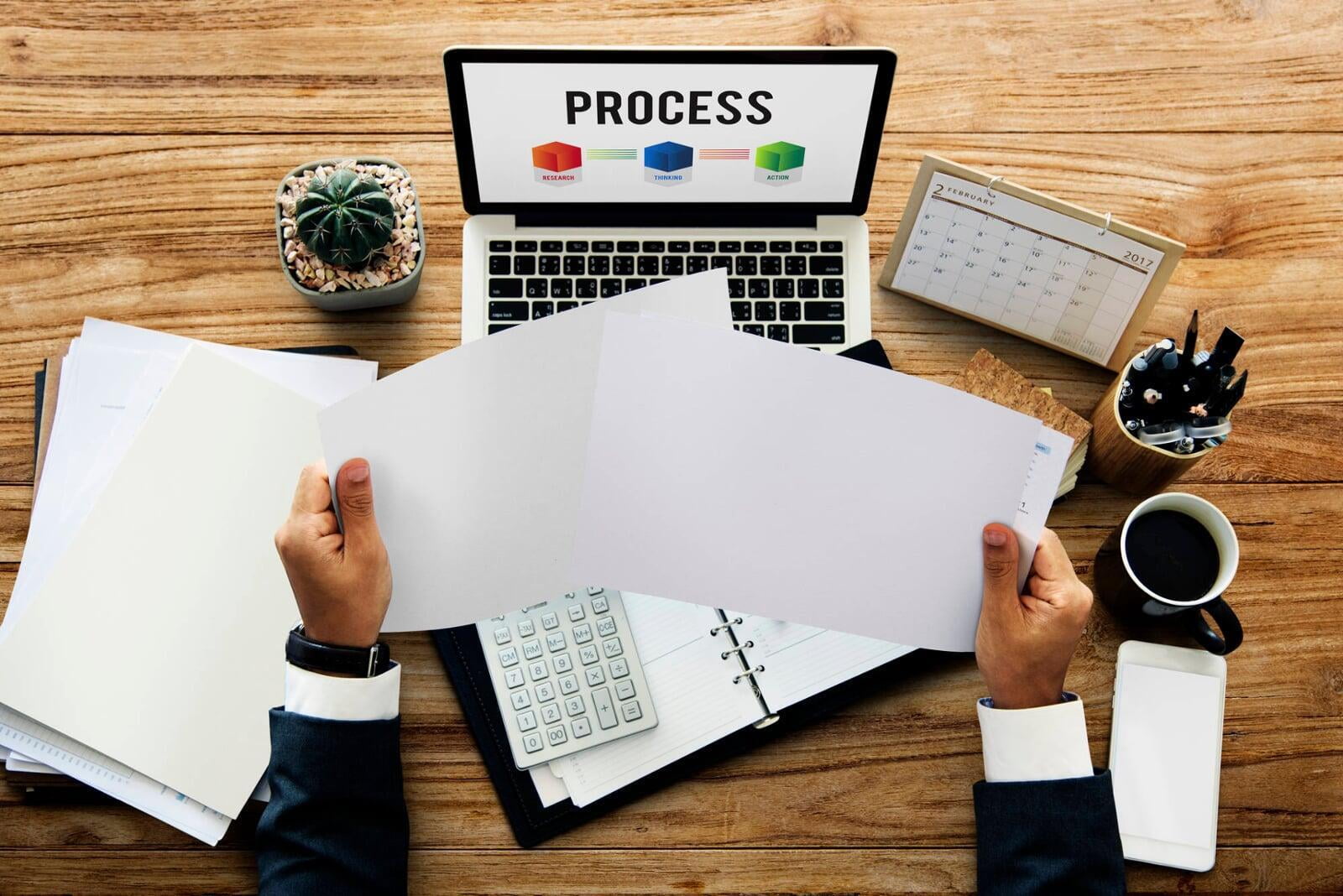75% of businesses that went under blame disorganization as the reason their business fell through.
An organized business helps streamline processes from all areas of development, making everything easier for executives, employees, and even customers.
What’s the best way to organize a business? Increasing efficiency.
Business efficiency can boost organization, improve productivity, and can even save your business some money. In addition, your organization and productivity will help beat your competition though it's much better to focus on how to improve your own business than focusing on bringing another down.
What are some examples of improved business efficiency? Getting your accounting in order, streamlining your processes, and implementing or improving other necessary functions such as marketing.
If your business is struggling to optimize business efficiency, here are nine methods to create a more efficient business.
1. Optimize Technology
1. Optimize Technology
The first step your small business can take to improve efficiency is to utilize technology.
Business technology comes in all forms — including data storage, communication, project management, and can even help implement safety standards.
Which types of tech do you need? This depends on your business. Take a look at your internal process and see what is lacking. From here, research the type of tech that assists your weaker processes.
2. Remove or Change What Isn’t Working
2. Remove or Change What Isn’t Working

This advice goes hand in hand with the previous advice. While you’re taking a look at your internal processes, find other methods to change your downfalls. Common examples of changes you can implement include outsourcing certain duties in that category. If you can’t find a solution, don’t be afraid to remove that process and come back to it again.
3. Always Have a Goal & Track Results
3. Always Have a Goal & Track Results
If you’re implementing a new policy, always have a solution in mind. Even if you’re only beginning the basic framework of the plan, always identify your solutions or your goals. Planning the larger picture helps you organize the smaller tasks that lead to your goal. If you don’t have an end goal, you might as well scrap the plan or hold off until you can think of a solution. Make sure you have an ability to track the new results against any data you have about the problem. If you can't show improvement by tracking it will be difficult to say with any certainty that your solution had the intended impact.
4. Find Technological Solutions for Your Customers
4. Find Technological Solutions for Your Customers
Customer relations play a key role in your business’ success. Bad customer service is a ticket to business failure. What’s the easiest way to improve your customer relations? Remember how we mentioned technological solutions for your business? Your staff shouldn’t be the only ones utilizing tech. Find technological solutions for your customers.
Common examples include an app where they can shop for products, contact customer support, and include other core functions.
However, take the time to ensure your technology is UX-optimized and runs well. Otherwise, there’s a good chance you will lose customers who are frustrated that your "solution" turned into another obstacle for them to overcome.
5. Don’t Fear Risk
5. Don’t Fear Risk
All business leaders need to make risky decisions. While these decisions pose a chance of failure, they also provide an opportunity for success. Risk doesn’t always include unexpected actions or choices without foresight. These can include changes and taking a chance on an opportunity. Fortunately, business leaders are used to making risky decisions. Starting a business is a risk in itself. But the key to risk is making smart risky decisions. Don’t go into an opportunity without preparedness. If things don’t go according to plan, have plan B front and center but don't always be looking for the door. Even challenges and failures come with hidden insights and opportunities if you're patient and engaged (even if the risk doesn't seem to come with reward).
6. Create a Network
6. Create a Network

As you gain more experience as a business leader, you’ll quickly realize you have a network. Your network can include your neighboring business owners, especially if your business is located in a busy business district.
Online businesses can also create a network. This can include your business partnerships, your LinkedIn connections, and others in your niche. You’ll be surprised how much your business connections can help you out. If you’re struggling, reach out to your connections. They can offer support and advice to ensure your business is running efficiently.
7. Create a Culture of Open Communication
7. Create a Culture of Open Communication
The best way to point your company in the direction of efficiency is by implementing an open communication strategy. Also called an open door policy, this strategy allows for input from other executives and your team members at every level. Not only does this method help improve efficiencies, but it also boosts collaboration and leads to better production. Unfortunately, many employees are too intimidated to make suggestions.
As a business leader, approach your staff and ask if they have any input. Open up a section in each meeting for anyone to discuss a problem and collaborate on a solution.
8. Update Your Processes
8. Update Your Processes
Do you use the same software and technology from years ago? Probably not, right? Then why should you use the same outdated business processes?
The modern business sphere is under serious innovation. From remote work to better communication methods and even new office structures, the modern small business can create a better business landscape for the future. Make it a point to keep up with business innovation trends. Is an open office space out of season? Start building some private offices. Is there a better way to manage projects? Research innovative project management methods.
9. Don’t Forget About Your Budget
9. Don’t Forget About Your Budget
82% of small businesses fail due to poor cash flow management. Do you find it difficult to stick to your budget? Try and make your budget more efficient.
First, take your profits and losses from the previous quarter. Did your business have a good quarter? If so, there’s no shame in increasing your budget. But if you didn’t have a good previous quarter, keep a stringent budget. Go category-by-category, tracking spending for the month. Categories can include marketing, employee wages, technology, and all other supplies your business needs to function.
Do You Need to Improve Your Business Efficiency?
Do You Need to Improve Your Business Efficiency?
From your budget to improved technology, there are many ways to increase business efficiency. The methods employed should focus on what’s best for your business. Not every business knows what they need. This is one of the many reasons why businesses fail. A good way to know what your business needs is by asking a business efficiency consultant or operations consultant. A consultant will look at your current business processes, discover what needs improving, and will work with you on an improvement method.
If you’re looking for a business consultant, Universal Creative Solutions can help you out.

